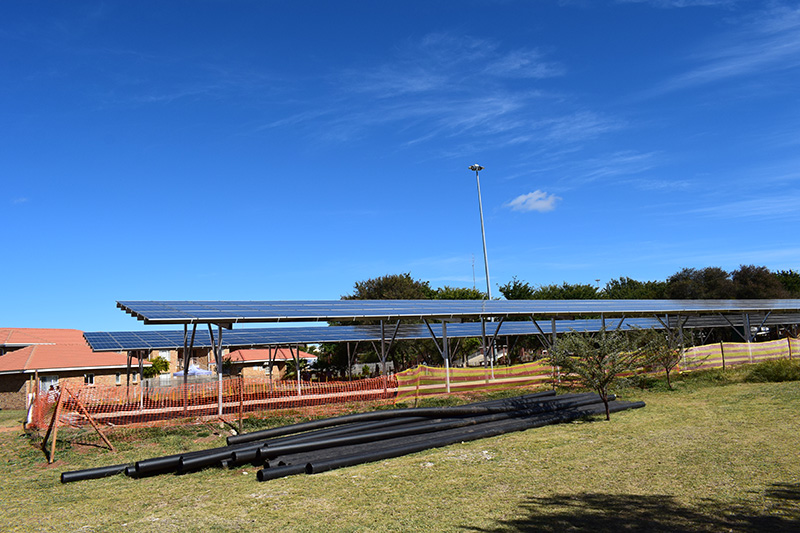Rows of parked cars and rooftops on the North-West University’s (NWU’s) Mahikeng Campus now share space with banks of solar panels, part of a campus-wide plan to reshape how electricity is sourced, used and sustained.
The new decentralised solar energy system is being installed across most parking areas and rooftops at the campus. The system includes 1 820 panels, each generating 550 watts of power, with a collective capacity of 1 megawatt peak (1MWp).
The panels are connected through 15 mini-systems that feed directly into the campus’s internal power grid.
“The systems connect to the university’s grid through inverters, ensuring that the power generated is used entirely on campus,” says Hendrik Esterhuizen, who oversees energy infrastructure at the NWU.
He notes that the system is designed to meet the campus’s base load requirements and does not feed power back into Eskom’s grid. This is important because it ensures the solar system directly supports the campus’s energy needs without relying on the national grid.
With the new solar plants the university enhances energy independence, reduces pressure on the public system, and improves resilience during load-shedding or power interruptions.
“It effectively acts as a virtual emergency power generator, supporting the campus’s diesel generators by adding additional capacity during load-shedding,” he adds.
Cost savings expected in the long run
The investment carries long-term cost benefits. Each 100 kWp solar unit costs about R2 million, including infrastructure and carport installation, says Hendrik. “While solar is cheaper than grid electricity in the long run, the capital investment must first be recouped.” The expected payback period is five to seven years.
Diesel use is the most expensive option, costing roughly four times more than grid electricity, Hendrik says. “Our solar systems are already helping to reduce carbon emissions, and we calculate these reductions monthly.”
Building and connecting the systems on a functioning university campus has presented challenges. Construction teams have worked around academic schedules, including tests and exams. Infrastructural limitations, such as available roof space and electrical access points, have required tailored solutions.
This solar installation forms part of a broader, phased energy project across the university’s three campuses. A 385 kWp plant is in place at the Vanderbijlpark Campus, with a 2 500 kWp system at Potchefstroom and 1 500 kWp at Mahikeng.
Future construction and major renovations will include similar solar energy components.
The rollout reflects a university-wide shift toward greater energy independence and measured investment in long-term sustainability.

More solar panels are being installed at the Biko House postgraduate parking.
